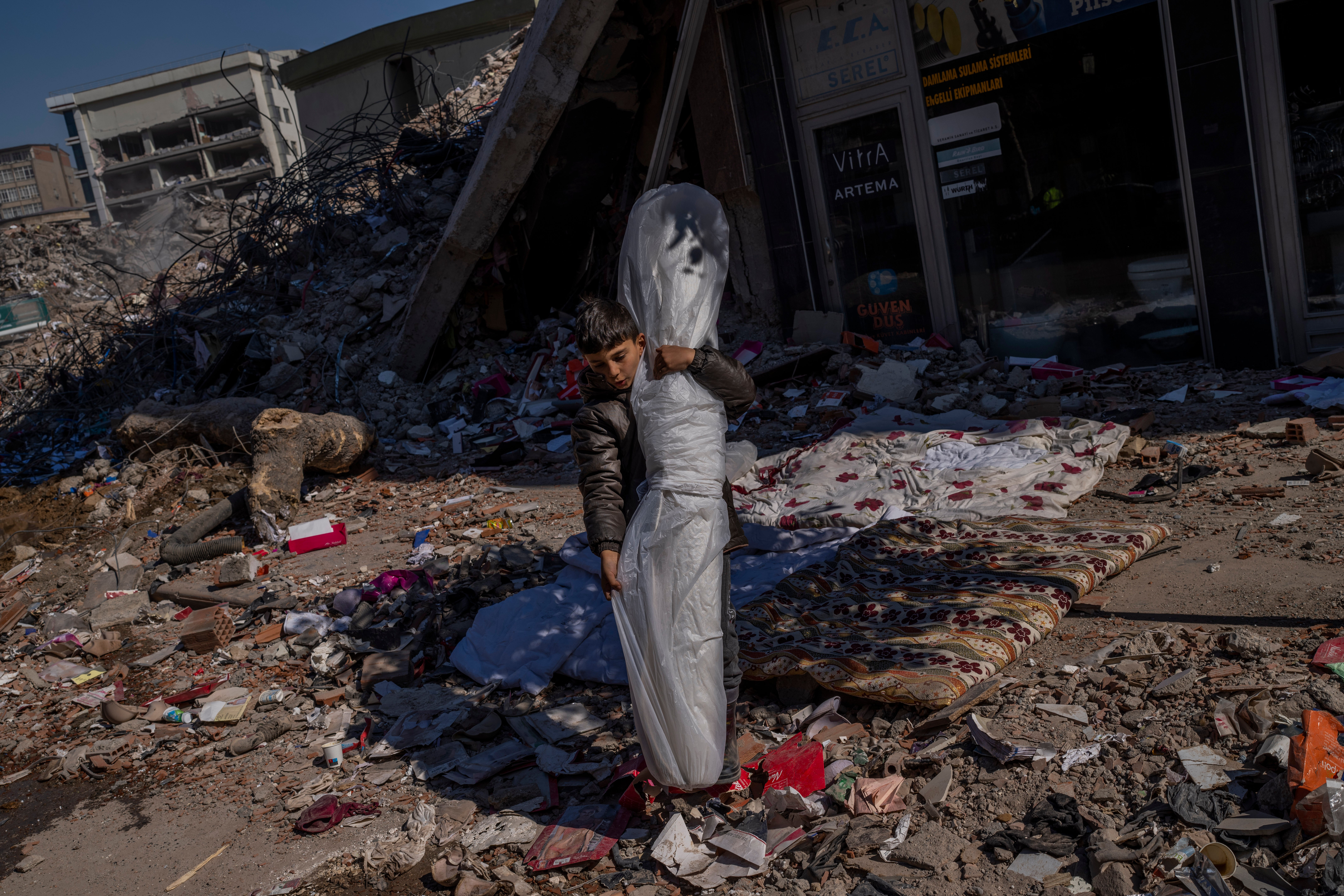The Turkey-Syria earthquake should act as a massive wake-up call
Our approach – or rather the lack of one – to climate-related displacement needs drastic reform, writes Ibrahim Özdemir


A week ago, my home country, Turkey, suffered the deadliest earthquake for almost a century: over 40,000 people were killed, tens of thousands more injured, and over six million were displaced in Turkey and in neighbouring Syria.
Countries rushed to help, pledging millions in aid and flying in crews to assist rescue operations in the rubble of cities – which I am extremely grateful for. But the unprecedented devastation is only a glimpse of what’s yet to come. Ultimately, last week’s events are a long-overdue wakeup call for the international community: the climate refugee crisis is here. And we are far from ready.
In the past decade global migrant flows have doubled, and over a billion people are at risk of displacement by environmental disasters by 2050. Since 2008, climate change has displaced three times more people compared to armed conflicts. Most of these climate refugees come from sub-Saharan Africa and the MENA region, already plagued with natural disasters and severe droughts.
Repeatedly, international summits such as COP27 and Davos keep failing climate refugees. At COP27 “displacement by climate change” remained a side-line discussion, and Davos turned into a billionaires’ playground, driven by “corporate greed”. With over 3 billion people living in countries considered to be highly vulnerable to climate change, we simply cannot keep ignoring the existence of the climate refugee crisis.
Under international law, climate refugees are not eligible for protection. In fact, there is not even consensus on who qualifies as one, since climate refugees are not covered by the 1951 United Nations’ Refugee Convention which only gives legal protection to people fleeing persecution due to their race, religion, nationality, political opinion or social group.
While the UN Refugee Agency, UNHCR, acknowledges the dangers climate refugees face in their home countries, international law fails to prevent nations from deporting them. And with no legal status, climate refugees are left with no legal migration options.
Meanwhile, policymakers are in denial. Days after the earthquake, the EU’s migration summit was hijacked by the far right calling for tougher immigration laws and more border fences. Ahead of the largest mass displacement in history, migration has become a political weapon characterised by “Trumpist strategies”.
The current climate towards refugees – most of them arriving from Muslim-majority countries – is increasingly hostile, with many Europeans hoping to ban them altogether. Therefore, leveraging values of common humanity will be crucial in prepping our societies for what’s to come.
Our approach – or rather the lack of one – to climate-related displacement needs drastic reform: one which could potentially model the temporary protection of Ukrainian refugees. That said, policymakers alone are unlikely to eradicate the public hostility towards migrants. This is where it becomes important to incorporate civil society leaders in the climate migration debate.
Civil society leaders, including religious leaders, could be invaluable in galvanising public support in favour of climate refugees. For example, a group of religious leaders recently joined forces with the European Commission, urging the EU to reaffirm its moral values and build upon the movement of solidarity created by the Ukraine war.
Another example comes from, Dr. Mohammed bin Abdul Karim Al-Issa, the Secretary-General of the world’s largest Islamic non-governmental organisation, Muslim World League (MWL), who has made his mission to leverage moral frameworks like faith to mobilise public support for refugees displaced by climate change.
By establishing a pioneering global interfaith coalition, Faith For Our Planet (FFOP), MWL is effectively utilising interfaith solutions and our shared moral values in the climate battle. For Western nations, battling against a growing anti-immigration sentiment, initiatives like these are crucial to secure social cohesion and to build up resilience ahead of the greatest humanitarian crisis of our time.
Some governments have also started to implement new visa categories for people displaced by the climate crisis. For instance, back in May, Argentina established a special three-year humanitarian visa for climate refugees from Mexico, Central America, and the Caribbean – paving way for a new more elastic approach to climate change-fuelled mass migration.
Moreover, AI holds massive untapped potential and could be used by governments as a preventative method to predict climate disasters before they strike. It can also be used to forecast where refugees are able to integrate more easily based on data of previous refugee and migrant patterns – as already done by programs like GeoMatch by Stanford University’s Immigration Policy Lab.
After all, Western nations won’t be able to cope with their aging populations without an additional labour force. By 2050, North America and Europe will have 300 million people above the retirement age. Last year, Europe already saw the highest number of unauthorised migrants entering the continent since the 2015 refugee crisis. And this number doesn’t even include the nearly eight million Ukrainian refugees across Europe who fled their homes after the Russian military invasion a year ago.
Back then, one million migrants caused an unparalleled political and humanitarian crisis. Now, we are at risk of facing a crisis a thousand times worse – it is high time the international community woke up to this realisation.
Ibrahim Özdemir is a consultant to the United Nations Environment Program (UNEP)






Join our commenting forum
Join thought-provoking conversations, follow other Independent readers and see their replies
Comments